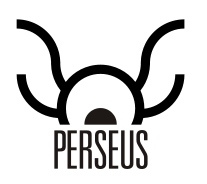 H.265 (aka HEVC) is supposed to half the video bandwidth / bitrate required compared to H.264 by delivering the same quality, and VP9 should also offer equivalent compression, but it’s just not as broadly supported in media processors. UK based V-Nova claims its Perseus codec can even beat that, by providing 2 to 3 times better compression than H.265 thanks to a new approach to video encoding, that allow the codec to leverage existing hardware, meaning it can be encoded with existing computers, and decoded by leveraging the CPU and GPU parallel processing capabilities in existing mobile & computing devices.
H.265 (aka HEVC) is supposed to half the video bandwidth / bitrate required compared to H.264 by delivering the same quality, and VP9 should also offer equivalent compression, but it’s just not as broadly supported in media processors. UK based V-Nova claims its Perseus codec can even beat that, by providing 2 to 3 times better compression than H.265 thanks to a new approach to video encoding, that allow the codec to leverage existing hardware, meaning it can be encoded with existing computers, and decoded by leveraging the CPU and GPU parallel processing capabilities in existing mobile & computing devices.
Perseus codec highlights:
- Highly efficient – >3x compression vs. state-of-the-art in practical use cases. Benefits further increase with increasing resolutions & frame rates.
- Extremely fast – Significant processing time reduction thanks to massively parallel architecture. Designed to take advantage of modern hardware
- Multi-scale (continuously hierarchical) – Single bit stream for all quality levels. Adaptive streaming from a single encode and the ability to make continuous, frame-by-frame, “on-the-fly” bitrate changes
- Runs on standard hardware – Backward compatible with legacy devices. Upgrades of existing ecosystem can be done with a simple software update (e.g., over-the-air)
- Highly robust – Maintains picture integrity even at very low bitrates
- Easy integration – Compatible with existing workflows; compliant with existing standards; Industry standard interfaces and APIs. (but the API is nowhere to be found, so it must require an NDA, and license fees).
In practical terms, it means that you could stream a SD video at 125 KBit/s, HD video at 500 Kbit/s (720p?), a “good quality” HD video can be broadcast at 2 Mbps, and 4K UHD videos at 4 Mbps using existing hardware and infrastructure.
V-Nova approach to video encoding is completely different from MPEG block-based compression algorithm, and instead Perseus has been designed as a hierarchical and scalable video encoding algorithm “functioning in a similar fashion to the human brain”, “by first visually recognizing a human being, then, a face, then a goatee, and then, gray hairs mixed into the goatee”.
The 2 to 3 times better compression is the average results, but that almost looks too good, especially since it should run on existing recent hardware (Although Broadcom claims CPU power is critical). I could not find side by side comparison with H.265, nor any video demo of Perseus. But we’ll soon find out since Perseus will be showcased at the National Association of Broadcasters (NAB) in Las Vegas on April 13-16 with Hitachi P-Link video gateways, OTT services leveraging Perseus, Perseus-powered HD and UHD contribution products by Elber, and VisualOn Perseus media players.
Via Embedded.com

Jean-Luc started CNX Software in 2010 as a part-time endeavor, before quitting his job as a software engineering manager, and starting to write daily news, and reviews full time later in 2011.
Support CNX Software! Donate via cryptocurrencies, become a Patron on Patreon, or purchase goods on Amazon or Aliexpress





great , yet another codec to support.
Hopefully the exist hardware (BayTrail Intel) can run UHD Video with Perseus codec
@Al
It’s a proprietary codec (closed), so it might end up being a flop if nobody uses it, but if their claims are true, then broadcaster will be all over it since they can save $$$ on bandwidth costs, or/and provide UHD quality with the same HD hardware.
too good to be true, but wait & see
Yeah, it almost feels like a April 1 joke.
But let’s hope some of this materialize.
If the specs are true, the broadcasters will all be very happy.
I’m skeptical too, are you sure this isn’t a April 1st joke or vaporware?
Thanks for the info anyway, regardless now I will just ignore this for now and wait until either FFmpeg or Libav teams release and open source decoder for this that is capable of running on modern ARM set-top box hardware with Quad-Core CPUs or higher.
I have no interest until there are open source decoders for codecs.
There are work being done on new Daala, NGIV, and VP10 codecs.
If it is backwards compatible, it means that it is just H.264 with a tweaked encoder. I’ve seen a rumour that x264 is used as backend.
Yeah, but what is the Weissman score? 🙂
The biggest problem with this is that it is proprietary with royalties and all- it has the problem On2 found with their VP series of codecs before they got bought by Google to make WebM with it all.
Great! One more codec. Is it something that I can minimally implement free like Dirac or VP8? No? Whoop-de-doo.
It’s seams to be 1st April joke. At v-nova.com/en/press.html articles are published at 1st April. And it looks to good to be true.
i don’t believe that
At least one French company (Wyplay) will be using Perseus codec in its PayTV middleware – http://www.broadbandtvnews.com/2015/04/28/wyplay-steps-forward-as-v-nova-perseus-integrator/
One more article about Perseus @ http://www.streamingmediaglobal.com/Articles/Editorial/Featured-Articles/V-Nova-Gains-Traction%3B-Will-Publish-Performance-Tests-at-IBC-105769.aspx
That part is interesting:
So it could be be achieve much better compression vs H.265 when carrying multiple resolutions.